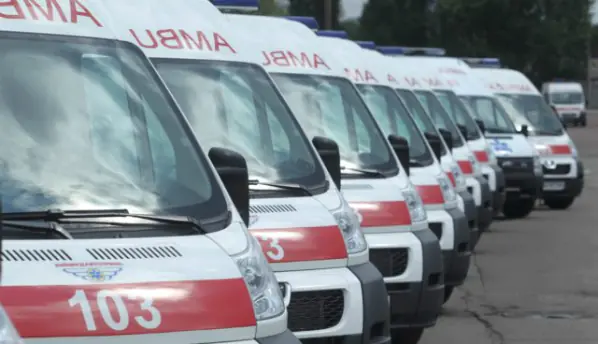From the new year, ambulance calls will be divided into “emergency” and “non-emergency”. Depending on the severity of the patient’s condition, doctors will have to arrive in 10 minutes or within an hour.
On January 1, Resolution of the Cabinet of Ministers of Ukraine No. 1119 of November 21, 2012 “On the standards for the arrival of emergency (ambulance) medical care teams at the scene of an incident” comes into force.
According to the document, patient calls are divided into “emergency” and “non-emergency” according to several criteria.
Emergency complaints include the following conditions:
-
loss of consciousness, convulsions, sudden difficulty breathing, pain in the heart, vomiting blood, acute pain in the abdominal area, external bleeding, symptoms of acute infectious diseases, acute mental disorders of the patient that threaten his life and health or the lives of others;
-
all types of injuries (fractures, dislocations, burns, severe bruises, head injuries;
-
electric shock, lightning, heat stroke, hypothermia;
-
lack of breathing (if a person has drowned or foreign objects have entered the respiratory tract);
-
damage during emergencies (road accidents, industrial accidents, natural disasters, etc.);
-
poisoning, bites of animals, snakes, spiders, insects, etc.;
-
disruption of the normal course of pregnancy (premature birth, bleeding and other conditions).
Emergency requests also include requests from medical workers to transport a patient if he needs medical support and urgent hospitalization.
On an emergency call, an ambulance should arrive within a maximum of 10 minutes if the patient is within the city, and within 20 minutes if outside the city. In case of bad weather and seasonal conditions, or due to road conditions, the ambulance may be delayed by no more than 10 minutes.
Non-emergency calls are considered to be calls from patients who complain of:
-
sudden increase in temperature with cough, runny nose, sore throat;
-
headache, dizziness, weakness;
-
pain in the lower back, joints (arthritis, radiculitis, osteochondrosis, arthrosis);
-
increased blood pressure;
-
pain in cancer patients;
-
alcohol, drug, toxic withdrawal syndromes (“withdrawal”, “hangover”).
-
exacerbation of chronic diseases if the patient is seen by a family doctor (hypertension, ulcers, chronic inflammation of the liver, gall bladder, intestines, kidney or joint diseases).
In this case, the patient will be treated by specialists from a specialized hospital or an ambulance will arrive within an hour if there are no emergency calls at that time and there is a free car.
Information about calling an ambulance (to numbers 103 and 112) and audio recordings of the conversation in accordance with the Law “On Emergency Medical Care” is stored for three years.
Source: mediaport.ua



